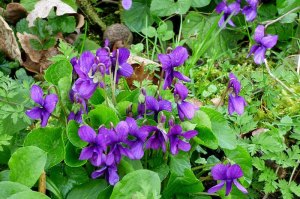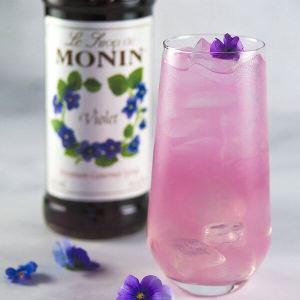Spring, the time of new birth and beginnings, is one of my favorite seasons. The splendor of new growth as it pops along a tree limb is glorious Mother Nature as she sheds her winter’s coat. Vibrant yellow and red tulips awaken in their dirt beds to decorate gardens throughout our area. Deep purple hyacinths, their fragrances heady and sweet, are a wonderful reminder that after the darkness of winter, springtime begins again.

(Photo by Gail Hampshire/CC BY 2.0)
Last week, Hubby began the task of clearing out dead branches in our blackberry bushes, while I began to clear the weeds that had grown between the cracks in the sidewalk. “Take a look at the flower beds,” he called from high above me as he balanced on the high wooden ladder. “There are a bunch of weeds there, too.” I gathered my gear and began to remove that which would choke the lilies and rose bushes that were planted nearby.
As I began to clear away, I noticed several spade-shaped leaves that had grown through the rock “cairn” I had built in memory of two men that I was blessed to call “Dad.” Upon closer inspection, I realized that my violet garden had doubled in size and was now creeping up the rock wall. Tiny jam-colored blooms peered up at me from their lowly position near the soil, their faces bright white at the center. After posting a photo of their intrinsic beauty, I received a message from my neighbor. It read simply, “Don’t forget to harvest them for syrup.”
Last year, when the entire world shut down, my neighbor and his friend gathered wild wood violets that had grown on their lawns. They created a beautiful violet syrup, which they used in cocktails later that weekend. The color, a dazzling amethyst that sparkled in the sunlight, was so beautiful that I swore to make the concoction myself. Sadly, I only had enough violets to muddle in a few tablespoons of hot water. The water was a faint blue, nothing like the color of my friend’s syrup. I was disappointed, to say the least.
After some research, I found that violets are edible in several culinary offerings. Violet flowers make a charming addition to any springtime salad, while frozen flowers can be used to decorate baked goods. The syrup derived from wood violets or wild violets can be used in cocktails, on pancakes and waffles or to make candies. Pansies and Johnny Jump-Ups, which are related to violets, are also edible and can be used in a wide variety of recipes.
When Spring rolled around, the first place I thought to try for fresh violets in abundance was Whole Foods. The gentleman in the produce department pointed me towards a small plastic container that held about 10 multi-colored pansy blooms for $4.99. I have a pot in my yard with mini-pansies, so I put the package back in the refrigerated section and hoped that I could find some wild violets that had not seen a landscaper’s fertilizer spreader.
Hubby and I were hiking last week in Brookville and happened upon a patch of the most beautiful little wild violets. We returned today to forage through the patch, which yielded approximately two cups of violet blooms. The violet patch was deep in the woods, so I doubt it had been treated with fertilizer or weed control solutions. Of note: Violets have a spade-shaped, curled leaf. Vinca or periwinkle, which is a vine with similarly colored blooms, can also be found on the forest floor. Its leaves are oval and pointed at the tip. While it can be used medicinally, it is best to consult with an herbalist before using Vinca. Also, please refrain from eating more than a handful of wild violets at a time, as too many will cause gastrointestinal distress. Violets are yummy, but they are not potato chips.
Once home, I measured out the violets and added them to a container with a lid. I boiled one cup of filtered water and added it to the container. All the violets were covered with water, but I used a wooden spoon to ensure complete submersion. I then covered the container to allow the blooms to steep for 24 hours.
After the 24 hours has passed, I can strain the tinted violet “tea” into a pot. I was advised to squeeze the wilted flowers to get every drop of color and fragrance. The wilted blooms will make a nice addition to my compost. I intend to bring the “tea” with equal parts of sugar to almost a boil, then remove from the heat and add the juice from a ¼ lemon. I think I still have an old Mason jar to store the syrup in the fridge. Although it is supposed to last for a month, I might finish it before the end of the week.

For those who wish the premade variety, Amazon sells a 25 oz. bottle of Monin’s violet syrup for $13.49.
Springtime is a wonderful time for something new. Violet syrup, while not commonplace by any means, can be an interesting spin on your Sunday brunch pancakes or in a wild violet cocktail called The Ultraviolet. I invite you to find something new to breathe fresh air into your corner of Hicksville, even if it is only to collect a bouquet of spring flowers to admire. Relish in the newness of the season and I wish you all a wonderful Spring.
Patty Servidio is an Anton Media Group columnist.






























